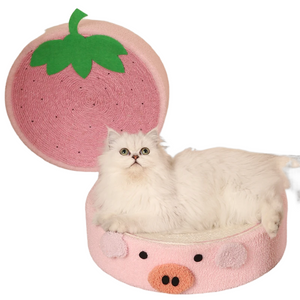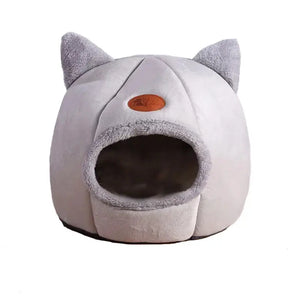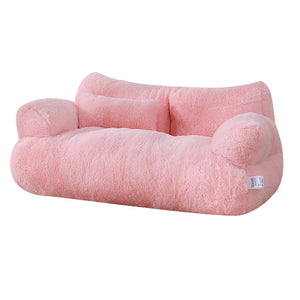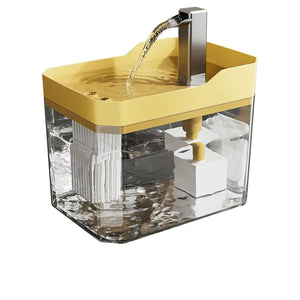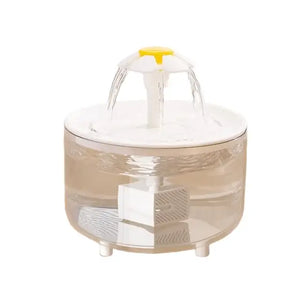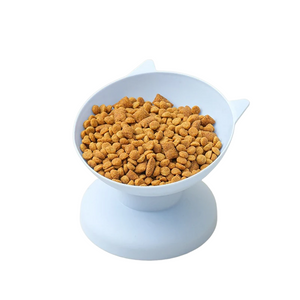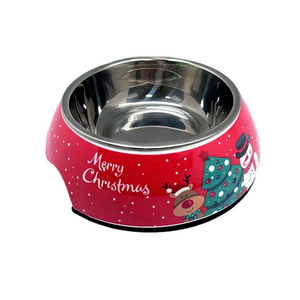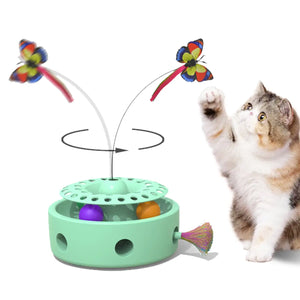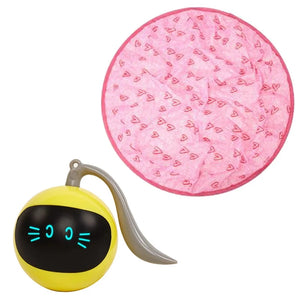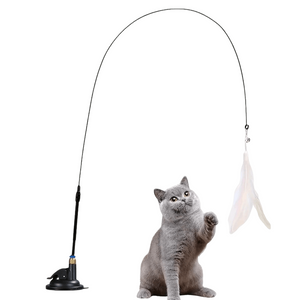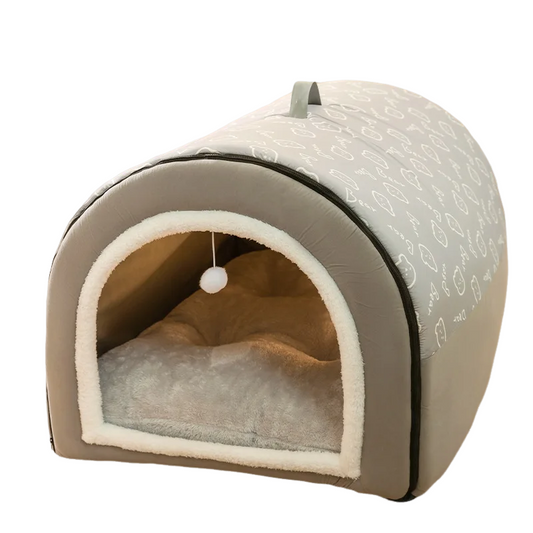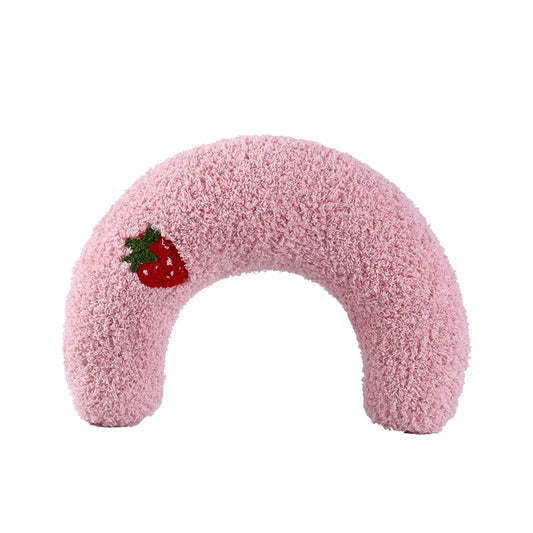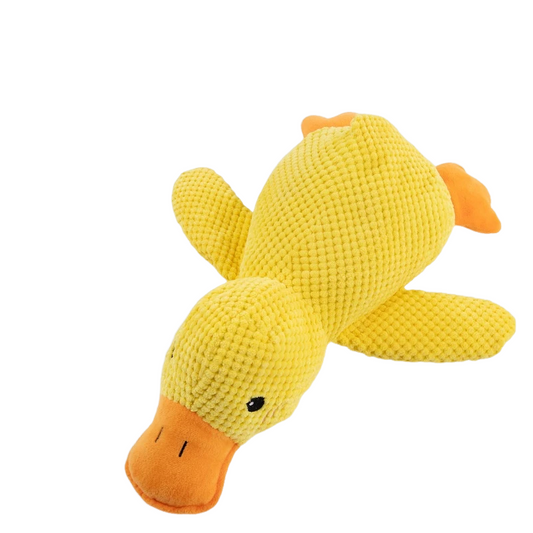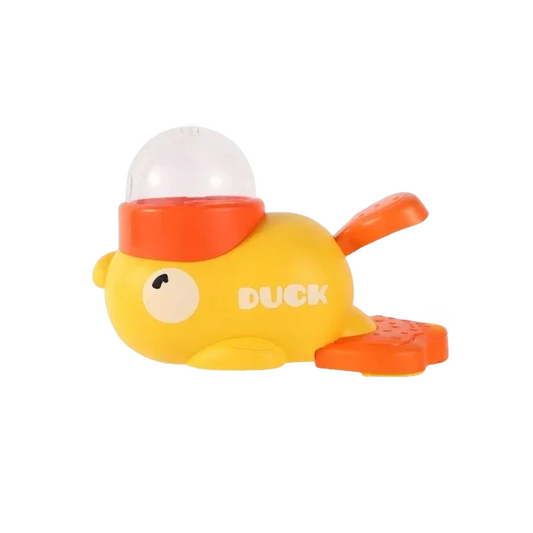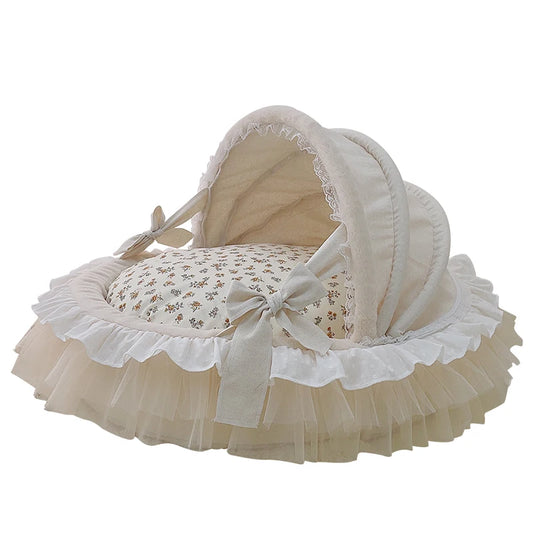Introduction
Winter can have a much larger impact on cats than we might think. Despite their natural fur coat, cats may still face discomfort and health risks due to cold temperatures, dry air, and significant indoor-outdoor temperature fluctuations. To ensure your cat stays healthy and happy throughout the cold season, it’s important to adopt specific care strategies. This comprehensive guide will cover various aspects of winter cat care, including indoor environment adjustments, diet, grooming, and health precautions, to help your cat safely navigate the winter months.
1. Physiological Reactions and Behaviors of Cats in Winter
1.1 How Do Cats Adapt to the Cold?
Cats are not as naturally suited to cold weather as dogs or other cold-climate animals due to their ancestry in warmer desert regions. Although their fur provides some insulation, their ability to regulate body temperature is limited. A cat's normal body temperature ranges between 38°C and 39°C, and when temperatures drop too low, cats rely on the following behaviors to keep warm:
-
Curling Up: Cats will curl up to minimize heat loss. In the winter, you may notice your cat sleeping more tightly curled than usual.
-
Seeking Warm Spots: Cats instinctively seek out warm places, such as sunny spots, near heaters, or close to electronics that emit warmth.
-
Thickening Their Fur: In the colder months, a cat’s fur naturally thickens to provide extra insulation, a biological response that helps retain body heat.
1.2 Health Risks Cats Face in Winter
Cold temperatures can pose several health risks to cats, especially short-haired breeds, senior cats, or those with weakened immune systems. Common winter health risks include:
-
Hypothermia: If exposed to cold temperatures for prolonged periods, cats may experience hypothermia. Symptoms include lethargy, cold limbs, and slowed breathing. Without timely intervention, hypothermia can become life-threatening.
-
Arthritis Flare-ups: Cold weather can exacerbate arthritis, particularly in older cats or those with pre-existing joint problems. Cold air often makes their joints feel stiff and painful.
-
Respiratory Issues: Cold, dry air can negatively affect a cat’s respiratory system, especially in cats that already suffer from respiratory problems like asthma or bronchitis.

2. Adjusting Your Cat’s Winter Home Environment
2.1 Providing a Warm and Comfortable Indoor Environment
Ensuring your home remains warm and comfortable during the winter is essential for your cat’s health, especially when outdoor temperatures drop.
-
Use Heaters or Radiators: Radiators or space heaters can keep the home warm, but be cautious to keep them out of your cat’s direct reach to prevent burns.
-
Give Your Cat a Warm Bed: Providing a cozy, warm bed or heated mat is a smart choice for winter. Choose a thick, enclosed bed that retains warmth more effectively. Heated mats are popular for providing a steady source of warmth to keep cats cozy.
Recommended Products:
- Winter Thickened Cat Beds
- Warm Cat Sofa
2.2 Avoiding Extreme Temperature Changes
The temperature difference between indoors and outdoors can be significant during the winter, and constant transitions can be hard for cats to adjust to. Keeping the indoor temperature consistent and avoiding prolonged exposure to extreme cold outdoors is important.
-
Limit Outdoor Time: If your cat is used to going outdoors, limit their time outside during winter, especially when temperatures are extremely low. For outdoor-loving cats, you can create a small outdoor shelter to provide a warm, windproof refuge with plenty of insulation.
2.3 Maintaining Proper Humidity Levels
In winter, indoor air can become quite dry due to heating systems, which can lead to dry skin or even respiratory issues for cats. Maintaining the right level of humidity is essential for their health:
-
Use a Humidifier: A humidifier can help balance indoor humidity, especially in rooms with heaters or air conditioning. It can reduce the drying effects on your cat’s skin and respiratory system.
-
Ensure Good Ventilation: Even in winter, it’s important to regularly ventilate your home to avoid moisture buildup and improve air quality. Be careful not to expose your cat to direct cold drafts during ventilation.
3. Adjusting Your Cat’s Diet and Nutrition in Winter
3.1 Increasing Caloric Intake
In cold weather, cats burn more energy to maintain their body temperature. Thus, it’s essential to increase their food intake during winter. Opt for high-calorie and high-protein foods to help them maintain their body weight and strengthen their immune system.
-
Winter-Specific Cat Food: Some brands offer cat food specially formulated for winter, with higher protein and fat content to help cats maintain their weight and energy levels.
-
Benefits of Wet Food: In addition to dry food, wet food can help keep your cat hydrated and provide additional moisture, which is especially beneficial in dry winter conditions.
3.2 Ensuring Adequate Hydration
Although your cat might not seem as thirsty in winter as in summer, hydration remains equally important during colder months. Dry air can cause dehydration and lead to urinary tract issues, so it’s vital to ensure your cat has access to plenty of water.
-
Prevent Water Bowls from Freezing: If your cat spends time outdoors, make sure their water source doesn’t freeze. You can use heated water bowls to prevent this in extremely cold conditions.
-
Encouraging Hydration: Use an automatic water fountain, which provides flowing water and encourages your cat to drink more. A fountain also ensures fresh water is always available.
Recommended Products:
- Automatic Cat Water Fountains
-
Plastic Water Bowls

4. Common Winter Health Problems and Preventive Measures
4.1 Hypothermia and Its Prevention
Hypothermia is a significant health concern for cats during winter. If a cat’s body temperature drops below 35°C (95°F), they may begin to exhibit signs of hypothermia, including cold limbs, dilated pupils, and difficulty breathing. To prevent hypothermia, you can take the following steps:
-
Limit Time Outdoors: In extreme cold weather, limit the amount of time your cat spends outside. If they do venture out, ensure they are properly insulated with winter wear and regularly check their condition.
-
Keep Them Warm Indoors: If you notice your cat’s body temperature dropping, wrap them in a towel, gradually increase the room temperature, and let them rest in a warm area. If needed, use a heated mat to provide additional warmth.
4.2 Arthritis Management During Winter
Arthritis is a common issue for many older cats, and the cold weather often exacerbates joint pain and stiffness. To manage arthritis in cats during winter, consider the following tips:
-
Provide a Soft Bed: In winter, a soft, supportive bed can help reduce pressure on a cat’s joints while keeping them warm.
-
Encourage Gentle Exercise: While your cat may be less active in the winter, it’s still important to encourage gentle exercise to keep their joints flexible. Use interactive toys or engage them in short play sessions.
4.3 Preventing Respiratory Issues
Cold, dry air in winter can negatively affect cats’ respiratory health, especially those with pre-existing respiratory conditions like asthma. To prevent respiratory problems from worsening, consider these precautions:
-
Maintain Humidity: Dry air can irritate your cat’s respiratory system, so using a humidifier to add moisture to the air can help alleviate any discomfort. It’s especially important to maintain humidity in heated indoor spaces.
-
Reduce Irritants: Avoid using sprays, scents, or aerosols that could irritate your cat’s lungs. Keep their living area clean and free from dust or allergens that may exacerbate respiratory issues.
Recommended Products:
- Humidifiers
- Air Purifiers
5. Winter Grooming and Fur Care
5.1 Grooming Differences Between Long-Haired and Short-Haired Cats
In winter, a cat’s fur naturally becomes thicker for added insulation. Regular grooming is essential, particularly for long-haired cats, as their dense fur can easily become matted, leading to skin issues. Short-haired cats also benefit from grooming, though they require less frequent brushing.
-
Regular Brushing: Long-haired cats need daily brushing to keep their coats smooth and free from tangles. Short-haired cats can be brushed a few times a week to remove loose fur.
-
Avoid Excessive Trimming: Avoid trimming your cat’s fur during winter, especially for long-haired breeds. Their thick winter coat helps keep them warm, and shaving them can make them more susceptible to cold. If trimming is necessary, limit it to hygiene areas.
5.2 Preventing Hairballs
As cats groom themselves more frequently in winter to stay clean and warm, they are more likely to swallow loose fur, increasing the risk of hairballs. Preventing hairballs requires regular grooming and other interventions:
-
Use Hairball Control Cat Food: Many commercial cat foods are designed to reduce hairballs, containing ingredients that help cats digest and pass ingested fur.
-
Offer Hairball Remedies: In addition to special cat food, consider offering hairball remedies, such as cat grass or fiber supplements, to help cats pass hair naturally.
5.3 Winter Protection and Insulation
While cats have fur, some short-haired or hairless breeds may need extra protection during winter:
-
Winter Clothing for Cats: Short-haired or hairless cats, particularly in homes with lower indoor temperatures, can benefit from wearing cat sweaters or jackets designed to retain body heat without restricting movement.
-
Limit Baths: Frequent bathing in winter can strip a cat’s skin of its natural oils, reducing its ability to retain warmth. If you need to bathe your cat, use gentle products and ensure they are quickly dried to prevent chills.
6. Indoor Interaction and Mental Health in Winter
6.1 Increasing Indoor Interaction
Winter may limit your cat’s outdoor activities, so keeping them engaged indoors is crucial. Cats can become lethargic or even gain weight from reduced activity levels during winter. You can encourage exercise through interactive toys or play sessions to help them stay active and healthy.
-
Recommended Toys: Automatic cat toys, feather wands, and other interactive toys can keep your cat entertained and prevent boredom from inactivity during the winter months.
6.2 Maintaining Emotional Connection
Winter is a more isolated season, and your cat’s emotional health also requires attention. Spend extra time interacting with them, ensuring they feel warm and loved even as outdoor activities decrease.
7. Common Winter Care Myths
7.1 Myth: Cats Don’t Need Special Winter Care
While cats have a natural fur coat, cold temperatures and dry air can still negatively affect their health. Senior cats, short-haired breeds, and those with existing health issues require extra winter care.
7.2 Myth: Cats Can Stay Outside for Long Periods
Even if your cat is used to being outdoors, extreme cold temperatures pose a significant risk. Limit outdoor time during winter, or provide a warm outdoor shelter for them to retreat to.
7.3 Myth: Cats Don’t Need to Drink as Much in Winter
Despite lower temperatures, cats still need plenty of hydration. Dry air can lead to dehydration, so ensuring access to fresh water is essential.
Conclusion
By adjusting the home environment, managing their diet, grooming routine, and monitoring health, you can help your cat safely and comfortably navigate the winter season. Proper warmth, dietary adjustments, regular health checks, and mental stimulation all contribute to ensuring your cat’s well-being during colder months. Maintaining your cat’s emotional health and providing interactive play can also keep them happy during the quieter, colder season.

References
- Smith, J. (2020). "Feline Thermoregulation in Cold Weather." Journal of Animal Behavior, 14(3), 145-159.
- Davis, L. (2021). "Winter Health Risks for Cats: Hypothermia and Arthritis." Feline Health Journal, 17(1), 89-101.
- Johnson, A. (2019). "Indoor vs Outdoor Cats in Winter: How to Keep Cats Warm." Pet Care Review, 7(2), 110-120.
- Walker, M. (2018). "Grooming Cats in Cold Weather: Tips for Long and Short-Haired Breeds." Animal Grooming Science, 9(2), 189-203.
Related articles:
- https://the-pet-paradise.com/blogs/news-cats-blogs/summer-care-for-cats
- https://the-pet-paradise.com/blogs/news-cats-blogs/spring-and-autumn-care-for-cats






